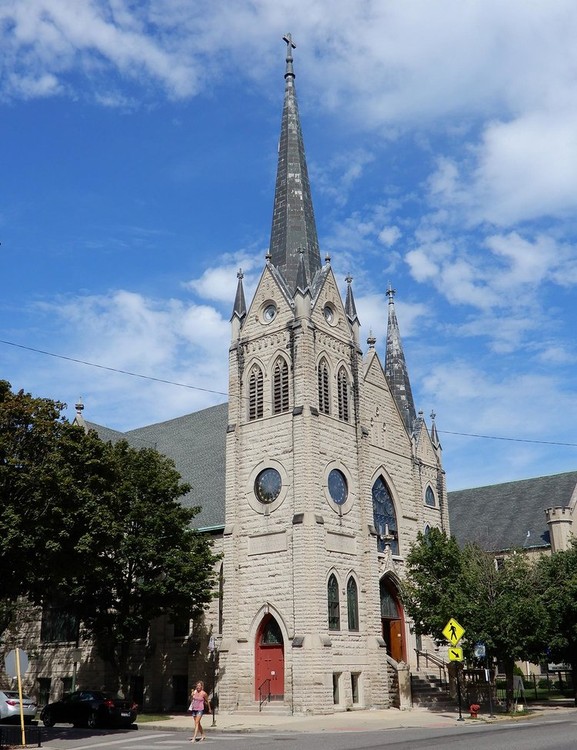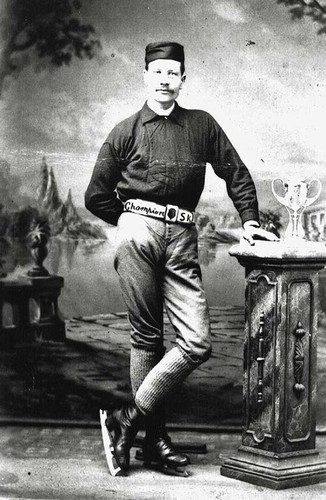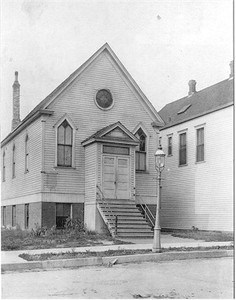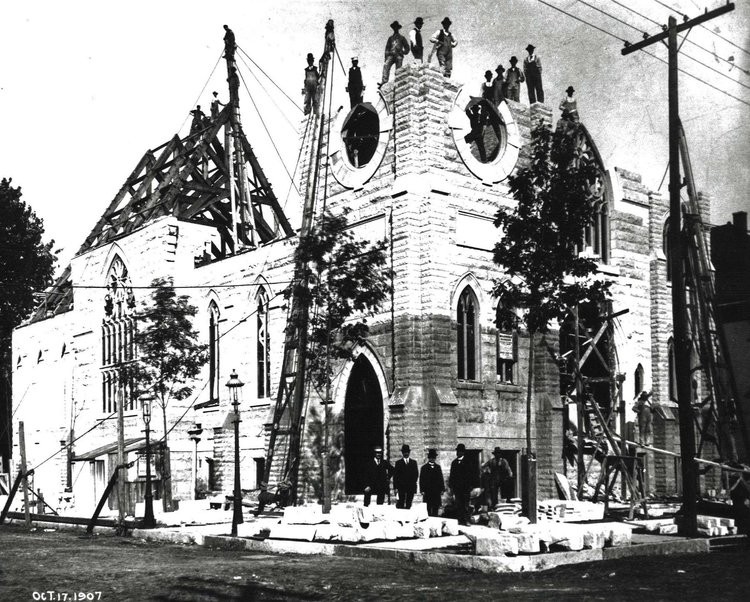Ebenezer Lutheran Church
Introduction
Text-to-speech Audio
Images
Ebenezer Lutheran Church

Andrew Norman, Swedish immigrant & architect of Ebenezer Lutheran

One of the early wooden homes of Ebenezer Lutheran Church

Ebenezer Lutheran Church under construction in 1907

Backstory and Context
Text-to-speech Audio
In the late 19th and early 20th century, over one million Swedes (approximately 20% of that country’s population) immigrated from Sweden to the United States. Pushed by overpopulation in Sweden and drawn by the agricultural and labor opportunities of the Midwest, many Swedes landed in Chicago. The biggest boom in Swedish immigration occurred around the turn of the century, and by 1930 there were over 200,000 first- or second-generation Swedish-Americans living in Chicago. Often moving into ethnically-centered neighborhoods, Chicago’s North Side neighborhoods of Andersonville and Edgewater became Swedish enclaves.
Swedish immigrants brought their Protestant religious beliefs with them. In 1892, with the assistant of Reverend C.A. Evald of the Immanuel Lutheran Church and with funds raised by a local sewing circle, 33 Swedish immigrants established Ebenezer Lutheran Church. The congregation initially rented a wooden store on Summerdale Avenue and subsequently moved locations several times in its early years. The church served as social, religious, and cultural hub for the local Swedish community, and its membership grew to 200 members over time.
The Ebenezer congregation contracted Andrew E. Norman to construct a permanent home for the church, and in 1904 the cornerstone was laid along Foster Avenue. Norman was a Swedish-born immigrant himself, who in 1880 at the age of 20 immigrated to the United States and eventually settled in Edgewater. A noted architect and woodcarver, Norman designed a number of buildings in the area, although Ebenezer Church is his “most iconic structure in the neighborhood…a fine limestone edifice that features the architect’s own interior woodcarvings.”[3] The church was largely finished by 1908, and additions were later added in 1929. The sanctuary was renovated in 1977 in 1987.
The church has evolved from its Swedish roots over the past century, in part reflecting the shrinking Swedish immigrant population. Under the leadership of Pastor Theodore Matson in the 1950s, the congregation began to extend its mission beyond the Swedish community. In the 1960s it was a part of the Lutheran Church of America and in 1988 joined the newly formed Evangelical Lutheran Church in America. In more recent years, the church has adopted a “Reconciling in Christ” position that welcomes those in the LGBTQ community to be church members, leaders, and to “have their unions blessed by the pastor.”[2]
Though it has evolved over time, the Ebenezer Lutheran Church still pays homage to its Swedish roots; the Swedish-American community celebrates St. Lucia Day at the church every December 13. St. Lucia’s Day (or St. Lucy’s Day) honors St. Lucia, an early Christian martyr, and is celebrated as a festival of lights throughout parts of Scandinavia. Ebenezer also hosts a julmässa (Swedish Christmas liturgy) on the Sunday before Christmas in partnership with the Consulate General of Sweden.
Sources
1. Anita Olson Gustafson. "Swedes." Encyclopedia of Chicago. Web. Accessed November 16, 2020. http://www.encyclopedia.chicagohistory.org/pages/1222.html
2. "History." Ebenezer Lutheran Church. Web. Accessed November 16, 2020. http://ebenezerchurch.org/whoweare/history/
3. Julia S. Bachrach. "Swedish Immigrants in Chicago's Architectural History." September 3, 2019. Julia Bachrach Consulting. Web. Accessed November 16, 2020. https://www.jbachrach.com/blog/2019/8/30/swedish-architects-in-chicago-history
4. "Ebenezer Lutheran Church." Edgewater Historical Society. Web. Accessed November 16, 2020. http://www.edgewaterhistory.org/ehs/local/churches-ebenezer-lutheran-church
5. "St. Lucia's Day." Encyclopedia Britannica. Web. Accessed November 16, 2020. https://www.britannica.com/topic/St-Lucias-Day
Julia Bachrach: https://www.jbachrach.com/blog/2019/8/30/swedish-architects-in-chicago-history
Chris Kale Corcoran: https://www.jbachrach.com/blog/2019/8/30/swedish-architects-in-chicago-history
Ebenezer Lutheran Church: http://ebenezerchurch.org/whoweare/history/
Chris Kale Corcoran: https://www.jbachrach.com/blog/2019/8/30/swedish-architects-in-chicago-history
